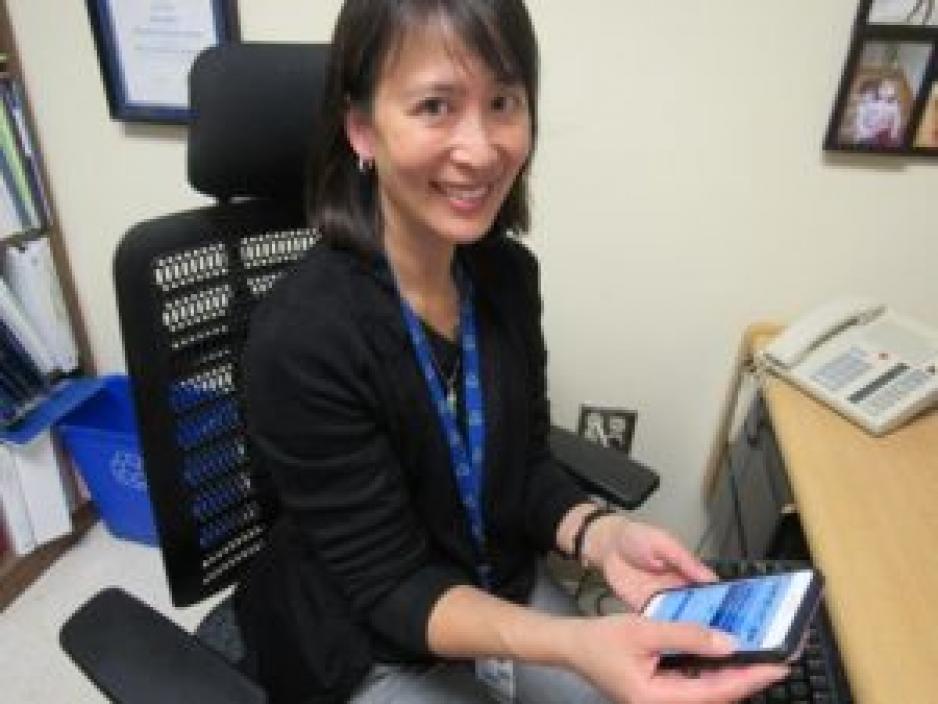In the early 1980s, the AIDS epidemic struck at near global levels. Initially baffled, scientists worked swiftly to isolate the highly infectious virus thought to cause AIDS. By 1987, the U.S. Food and Drug Administration (FDA) had approved the first anti-retroviral drug and the World Health Organization had launched the first Global AIDS Strategy.
Today in Canada, the rate of infection has significantly decreased over time due to the effectiveness of antiretroviral therapies combined with public health awareness initiatives. However, over the past two decades, human immunodeficiency virus (HIV) pharmacotherapy has become increasingly complex as the focus of care has shifted from management of acute infections to chronic care of an ageing population.
Alice Tseng is an associate professor at U of T’s Leslie Dan Faculty of Pharmacy and an HIV Pharmacotherapy Specialist in the Immunodeficiency Clinic at Toronto General Hospital. Over twenty years ago, she helped establish the Canadian HIV/AIDS Pharmacists Network (CHAP). Today, the network remains vibrant and active, and is the unifying professional group for HIV pharmacists across Canada.
“Pharmacists play an important role in treating patients with HIV because so many aspects of treatment emphasizes medication adherence, drug absorption, drug interactions, management of adverse reactions, and therapeutic monitoring,” says Tseng. “The treatment is complex and because pharmacists have an expertise in medications, we can really make a contribution as part of the care team.”
But unlike other areas of hospital-based treatment, like cardiovascular care for example, there is typically only one or two pharmacists who specialize in HIV pharmacotherapy at a single centre, which can be isolating. “In other practice areas there is usually a team of pharmacists to work with and learn from. The creation of the CHAP network really is a life-line for pharmacists who specialize in HIV treatment,” she says. “We can connect with each other as needed and share experiences and strategies for optimizing care.”
The group meets annually in person and connects regularly online. In addition to sharing expertise and resources, the group is also committed to collaborating on research, fostering the development of HIV/AIDS pharmacist mentors and to promoting the pharmacists role in HIV therapeutics on a national and international level.
One area of focus that the group regularly discusses is the changing nature of patient care. As the majority of patients affected by HIV has shifted to an ageing population with additional co-morbidities, the risks associated with taking multiple medications increases significantly. According to a 2013 study led by Tseng and published in the Annals of Pharmacotherapy, older patients were on more drugs compared with younger patients and were at higher risk of potential interactions, partly because of therapies for comorbid conditions.
“A key concern for physicians managing older HIV-positive patients is the potential for drug interactions,” says Tseng. To help address this concern, Tseng worked with a team of healthcare specialists and developers to create a free web and mobile app which instantly alerts healthcare professionals to harmful drug interactions for patients who have HIV or hepatitis C and other illnesses.
The HIV/HCV Drug Therapy Guide app is designed for both iPhone/iPad and Android devices and includes more than 50 HIV and hepatitis C drugs, with 500 other commonly prescribed drugs, involving more than 15,000 drug combinations. “In contrast to other HIV or hepatitis drug interaction platforms, the HIV/HCV Drug Therapy Guide includes information specific to Canadian monographs, and also has an Alternative Options feature which suggests safer drug combinations when drug interactions are identified,” she says.
The app is widely used by clinicians all over the world. Approximately 55 per cent of visitors are from Canada, with the rest from countries including the United States, United Kingdom, Australia, Spain, India and South Africa.
Over the most recent 30-day period, the app was visited by 3,626 unique visitors who viewed 11,704 app pages. These visitors used the app to perform 4,042 drug interaction searches, and look up information on HIV/HCV drugs 412 times.
More News
Image

Dean Lisa Dolovich reappointed for second term
Professor Lisa Dolovich has been reappointed for a second term as Dean of the Leslie Dan Faculty of Pharmacy, University of Toronto, effective July 1, 2025, to December 30, 2030.
Read More
Image

Pharmacy Summer Camp gives high school students insight into pharmacy profession
A new summer camp based at the faculty will give high school students a range of experiences in pharmacy and pharmaceutical sciences.
Read More
Image

Team GloveLift wins 2025 Business Plan Competition with innovative medical device
PharmD students win $5,000 prize for their innovative medical device concept aimed at improving patient care.
Read More
